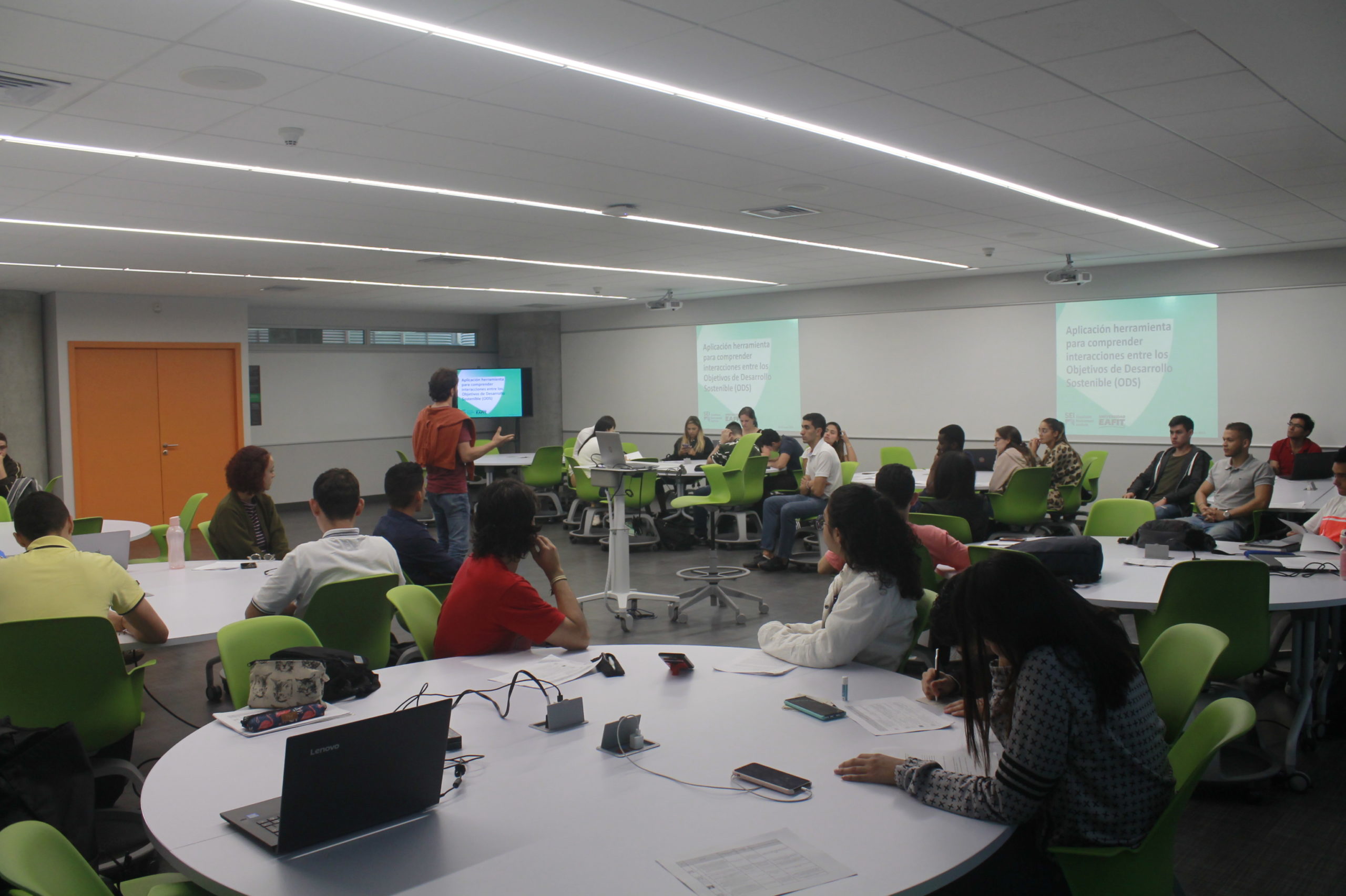A very different use of the SDG Synergies tool was tried out in a series of five workshops at EAFIT University, Medellín. Here the aim was to test how it could be used to help university students to better understand systems thinking.
The students were asked to score interactions between five targets from the Sustainable Development Goals (SDGs) targets. Sometimes the students did the scoring individually, in other cases they worked in groups of four or five, discussing each interaction before settling on a score.

Immediately after the workshops, surveys were conducted to examine how the tool had promoted systems thinking among the participants. The results from the surveys suggest that the SDG Synergies platform helped the students to identify interactions between topics that they had previously thought were unrelated.
Moreover, the visualizations produced by the tool helped the participants to identify synergies and trade-offs that were not evident to them when the only looked at the matrix of interaction scores. This confirmed that the visual capabilities of the tool are an important support to understand the complex and systemic nature of the 2030 Agenda.
The exercise also highlighted some methodological differences between conducting workshops with individual scoring and with group scoring, which can feed back into development of the SDG Synergies approach.


